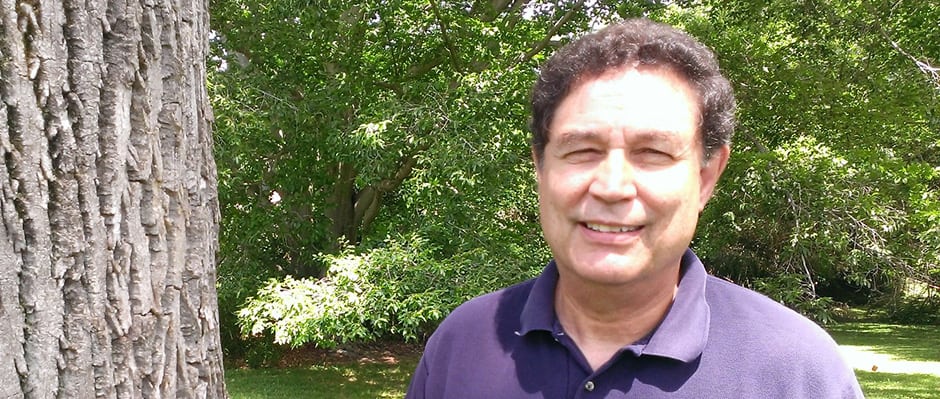Share this article
Thoughts from the Executive Director
In my three years as Executive Director for the Society, I have spent a fair amount of time in our archival files to get a better sense about issues and challenges the Society has faced in the past. An understanding of where we have been is helpful in seeing where we are now and what are our options for the future. One important thing I have learned is that a number of challenges the Society currently faces have been with us for many years, and in some cases many decades.
One such challenge involves the Society’s organizational units, in particular the connections among units and the home organization. A good deal has been written and discussed over the years about the need to better connect the parts of the Society and thereby make it a more effective organization. But the fact that this issue continues to be a topic of discussion suggests that the issue has not been resolved.
I should mention at the outset that better integration with our organizational units is a strategic focus of the Society, and is reflected in our Strategic Plan as one of its five strategic themes. The exact language for the theme is “The Wildlife Society supports and encourages networking among student chapters, state/provincial chapters, sections, working groups, Council, and headquarters to leverage synergies and communications that advance science-based wildlife conservation.” Under this theme are objectives that focus on the importance of mutual communication, cooperation, and support among the units. I thought it might be good to highlight some of the efforts we have undertaken, and are undertaking now, to address this theme and its objectives.
One new effort that has tremendous potential to improve interactions is the Conservation Affairs Network, which was formally launched a little over a year ago. CAN is essentially a network to promote the communication and coordination of policy, partnerships, and science-based conservation among TWS organizational units. Today, the network includes direct linkages among TWS chapters, sections, and our headquarters through Unit Conservation Affairs Committees or similar committees that monitor policy issues and take actions on behalf of their members. TWS Working Group leaders are also included in conversations to provide additional technical expertise. TWS Government Affairs and Partnerships staff are helping to document and facilitate CAN operations. See https://wildlife.org/the-conservation-affairs-network-from-the-wildlife-professional/ for more information about CAN.
A second effort involves TWS headquarters providing professional website management as a free service to all interested organization units, including website design and ongoing updates on their behalf. We believe this is an important service for our units, especially those that struggle to retain their own webmaster support. We have committed staff resources to implement this service well ahead of schedule and expect to complete the website conversions for all units that desire it by early- to mid-summer.
Yet another service that the Society now provides is to connect retired members, USDA Wildlife Services employees, and others with student chapters. For example, both retired members and Wildlife Services employees are available to speak at student chapter meetings in their local area. TWS Staff are facilitating contacts and arrangements between chapters and the retirees and engaged agency employees. One important benefit from these interactions is to improve information sharing about the parent Society and what it can do to support students in their career planning.
The Society also supports the units through financial management. This includes providing direct deposit as a free service to all interested organization units with U.S.-based banks, saving unit staff and officers time and making unit dues available on a more timely basis. In addition, the Society provides the option for organization units to attain non-profit status through the TWS group exemption with the IRS.
I should also mention the increased participation by TWS Council and staff in Chapter and Section meetings. For example, over the last year Council and staff have attended a total of 39 Section and/or Chapter meetings. When I first started at TWS, there was limited participation by Council and staff, in part because the Society had to curtail travel for financial reasons. Today, the level of participation is much more robust, and we are committed to continuing it going forward.
Other efforts include increased Council and staff attendance and support for the Student Conclaves, with the potential of increasing the number from five to eight with a corresponding increase in funding support from headquarters. In addition, we have implemented a number of new discounts for conferencing, dues, training, and books. And we are making improvements in our online services, including online voting for Council elections and the use of our web portals to access unit member lists. Finally, there are enhanced interactions with all TWS units through the Society’s new communications channels. For example, we now post news and stories from the Units on the TWS website, and we include upcoming meetings, workshops, and elections in the eWildlifer.
These are just some of the many new initiatives and efforts that are designed to make it easier than ever for the Society’s organizational units to be connected. Let’s continue to seek out opportunities to communicate, support, and coordinate with each other, and at last move toward a better integration of the Society’s collective efforts.
It’s a critical step we all can take to make TWS a more effective and influential organization in support of science-based wildlife conservation.








